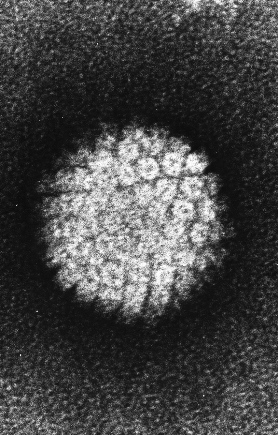Papillomaviridae
Papillomaviruses infect keratinized cells, giving rise to sarcoids, warts, and papillomas.
Morphology
- Medium-sized, icosahedral, non-enveloped dsDNA viruses
Virulence and Pathogenesis
- Target actively-dividing cells
- Warts: genes expressed are associated with transformation (hyperplasia and delayed maturation)
- Virus is shed as cells exfoliate
- Oral papillomas in young animals often resolve spontaneously
Epidemiology
- Resistant viruses: can persist in environment for months
- Restricted to stratified squamous and mucosal epithelia with slow growth
- Usually species specific
Types and Subtypes
| Papillomaviridae Learning Resources | |
|---|---|
To reach the Vetstream content, please select |
Canis, Felis, Lapis or Equis |
Pages in category "Papillomaviridae"
The following 4 pages are in this category, out of 4 total.
